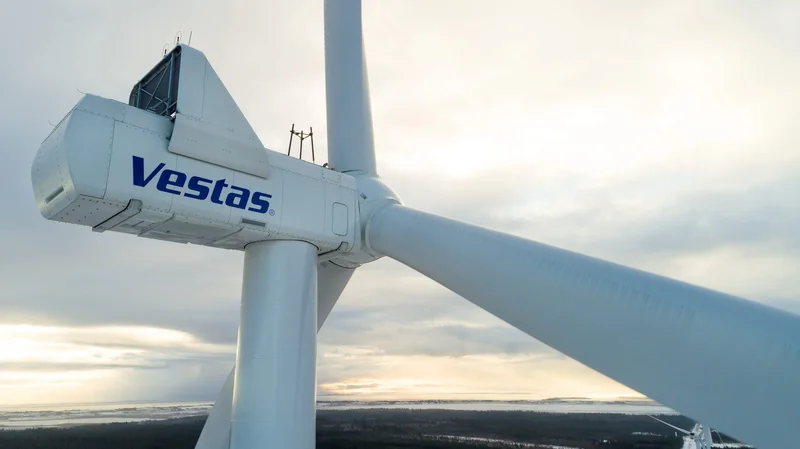Article Directory
Vestas' Q3 Performance: Is 'Narrowed Guidance' a Strength or a Signal?
Another quarter, another stack of numbers from Vestas, the Danish titan of wind energy. Q3 2025 results hit the wire, and on the surface, they paint a picture of steady, if not spectacular, progress. But for anyone who’s spent enough time sifting through corporate Financial Reports - Vestas, the real story often isn't in the bolded revenue figures; it’s in the subtle shifts, the carefully chosen words, and the implications of what isn’t said. My focus, as always, is on cutting through the PR veneer to the raw data.
Vestas reported EUR 5.3 billion in quarterly revenue. That’s a solid number, certainly, reflecting continued activity in a demanding market. The EBIT margin before special items came in at 7.8 percent, which is… decent. It’s not a blowout, but it’s not a disaster either, especially considering the ongoing cost pressures and supply chain complexities that continue to ripple through heavy manufacturing. Order intake for the quarter was EUR 4.6 billion, pushing the combined order backlog to a hefty EUR 68.2 billion. This backlog, in particular, is a crucial metric. It’s the company’s future revenue pipeline, and a robust one at that. For an industry like offshore wind, where projects are multi-year behemoths, that kind of visibility is gold. I’ve looked at hundreds of these filings, and a backlog of this magnitude (almost 13 times the quarterly revenue, to be more exact, 12.87 times) generally signals a stable foundation.
Parsing the Numbers: A Clinical Read
Let’s be precise about what these figures tell us. A 7.8% EBIT margin, while positive, suggests that profitability isn't soaring, but it's holding. In the capital-intensive world of wind turbine manufacturing, where R&D costs for cutting-edge models like their V236-15.0 MW™ are immense, maintaining any positive margin is a testament to operational discipline. What I find genuinely puzzling, however, is the lack of granular detail around the drivers of this margin. Was it volume, better pricing, or cost efficiencies? The report is a bit opaque here. We know Vestas is trying to spearhead a sustainable offshore wind industry, which implies significant investment, but how that translates directly into quarterly profitability fluctuations is a question that lingers.
The real analytical meat, however, lies in the seemingly innocuous statement: "Full-year guidance was narrowed." This isn't just a technical adjustment; it's a strategic declaration. When a company narrows its guidance, it can mean two things. Optimists will tell you it's a sign of increased confidence, a clearer line of sight to the year-end results, allowing for a tighter, more precise forecast. The company knows exactly where it's headed. Think of it like a seasoned sailor spotting land on the horizon and adjusting their course by a few degrees – they're more certain of their destination.

But there’s another, more skeptical interpretation. "Narrowed" can also mean the previous, broader range was simply too ambitious at the upper end, or that unforeseen headwinds have forced a downward revision. It’s not necessarily a cut, but it removes the possibility of a truly exceptional outcome. It’s a subtle recalibration, like a poker player tightening their range of possible hands – not necessarily folding, but definitely playing it safer. Without the specific previous range and the new, narrowed one, we’re left to speculate. Is this Vestas signaling that the market isn’t quite as buoyant as they initially hoped, or are they just being prudent in a volatile energy landscape? The details on why they narrowed it remain scarce beyond the standard earnings call rhetoric, which often feels like a carefully choreographed dance.
Beyond the Balance Sheet: The Unseen Currents
Vestas is deep in the trenches of the offshore wind sector, a battleground of innovation and immense capital. The V236-15.0 MW™ isn't just a turbine; it's a statement, a wager on the future of energy. This isn't a small-stakes game. Building these colossal machines, transporting them, and installing them in the unforgiving marine environment is an engineering marvel and a logistical nightmare. Every quarter, these reports give us a snapshot, but what they don't capture is the sheer grit required on the ground. I often wonder, when looking at these consolidated financial statements, about the precise operational challenges that lead to a 7.8% EBIT margin. What unforeseen issues arose during the manufacturing of a blade, or the installation of a tower, that shaved a few basis points off profitability? The quantitative data is solid, but the qualitative story of execution in such a complex field is always more nuanced than a percentage point.
This brings me to a methodological critique of how we, as analysts and observers, often interpret these reports. We take the presented numbers as gospel, but they are the output of countless inputs, assumptions, and real-world frictions. The company announcement summarizes Q4 and full-year results, but it’s the interim reports like this Q3 one that often contain the most telling, subtle shifts. They are mid-course corrections, and those are always more informative than the final destination.
The Forecast Just Got Sharper, But Is It Brighter?
Vestas' Q3 report offers a mixed bag. The backlog is strong, revenue is up, and profitability is positive. But the "narrowed guidance" is the elephant in the room. It’s a tightening of the reins, a more defined path. But whether that path leads to a higher peak or simply avoids a deeper valley is the question that remains unanswered. My analysis suggests that while the current numbers are stable, the future outlook, as interpreted through this guidance adjustment, hints at a more constrained, perhaps less explosive, growth trajectory than some might have hoped. It's a reminder that even the most powerful winds can shift unexpectedly.
